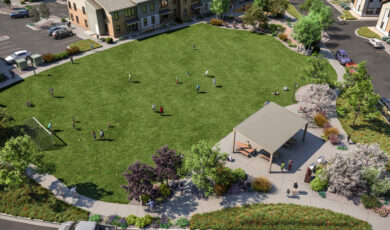
County Approves Whetstone Community Housing Plan
“Monumental change for this community” This article originally appeared in The Crested Butte News. Gunnison County’s largest affordable housing…
Read More
Gunnison County’s largest affordable housing project to date is moving forward, having sealed final land use change approval this week. The Whetstone Community Housing major impact project received a combined preliminary and final plan approval on Tuesday, October 8 and the applicant will now set out to bring 252 rental units to the North Valley by 2027. The plans were approved in back-to-back meetings with the Gunnison County planning commission and then with Gunnison County commissioners. Gunnison County is both the applicant and developer of the project.
The planning commission held a joint public hearing with county commissioners on Tuesday which included an initial project update presentation from the applicant, questions from the commission members, county staff commentary, and then public comments. The applicants then responded to public comments and questions, followed by a county staff review of recommendations for several minor conditions to be included in approval of the project. The planning commission board members then voted unanimously in approval with conditions, which sent the final decision to the board of county commissioners. Commissioners also approved of the final plan with the recommended conditions.
County commissioner Laura Puckett Daniels recused herself from both the planning commission and county commissioner meetings and did not cast a vote regarding the project, stating that while she had no conflict of interest she had been an advocate for the project when dealing with the town of Crested Butte on a utility extension agreement (UEA) and did not want that role to detract from the process and sense of government transparency.
The project applicant was represented by John Cattles, assistant county manager for sustainability and operations, and Norris Design principal Elena Scott. Texas-based Servitas is the county’s chosen developer, and while its principal Angel Rivera attended online, Rivera did not speak during the meeting.
Cattles and Scott reviewed the changes made between sketch plan and preliminary/final plan, which included a reduction in the number of parking spaces, in the number of buildings, addition of open space and a programmable field for recreation, a final utility extension agreement (UEA) with the town of Crested Butte for water and sewer service that was finalized the night before (See story on page 1), a new agreement with the Upper Gunnison River Water Conservancy District (UGRWCD) to provide water augmentation for irrigation and last month’s confirmation that a roundabout and pedestrian underpass will be constructed in tandem with the project thanks to recent federal funding.
The final project plans maintain the original central park design, have added a dog park based on community feedback, preserve more site area for recreation, snow storage and stormwater management with 47% open space overall and include landscaping updates to accommodate the county’s recent adoption of the Wildland-Urban Interface (WUI) codes and other fire district requirements. In some areas this means reducing vegetation and trees.
Approximately 20 people from the community attended the meeting in person with several others listening in on Zoom. During public comment, nearly 20 people weighed in with comments ranging from complete support for the project to adamant opposition, and some sentiments in between. No one opposed the concept of building more workforce housing in the North Valley, but the majority of concerns expressed were in regard to the large, three-story multifamily buildings designed to back up to Highway 135 at the development’s entrance that will somewhat change the character of an otherwise sparsely developed highway corridor.
George Gibson and Marcus Martin reiterated their ongoing objections that the project was too expensive, too dense, too far from the town of Crested Butte and that the process had been flawed with commissioner Puckett Daniels acting as an advocate for the project rather than a final decision-maker.
Reggie Masters said she objected to Whetstone’s “massive building” on the highway and requested the design be scaled down or broken up in keeping with “how for years the county has prevented development along the highway corridor.” Nan Lumb, Kathy Wiggins, Rebecca White and Gayle Mancuso expressed similar concerns, and advocated to keep the rural feel of the highway intact with smaller buildings.
Developer Gary Gates of Gatesco Inc., who built the Paintbrush affordable housing project in Gunnison in partnership with the county, said Whetstone’s estimated $130 million cost was twice what his Paintbrush project cost per square foot, and proposed that he could build the project for $80 million instead while using 100% private financing. The county has a contract with Servitas as the developer.
Grant Bremer encouraged the county to keep up its record of building good housing projects but to change course slightly by doing Whetstone in phases and to “secure fiduciary protection for all of us.”
Several neighboring property owners such as John Murphy and Terry and Todd Colvin spoke of their general sense that they had been considered and felt comfortable with the process, asking that final details like water runoff management and an access easement for their properties be addressed in the final approval.
Scott Desmarais, president of the Gunnison Valley Housing Fund (GVHF), said this housing was vital to the university, the hospital, the ski resort and to halt it would set the county back many years. “There is no market solution for something like this, no matter what some people might tell you,” he said. “And I’m afraid many of the concerns you’ve heard today are not credible.”
Jim Starr said this process has had more collaboration and community involvement than any other project in the valley and meets the needs of the missing middle.
Emily Gabler said as a board member of the GVHF she supports this innovative project filling a gap for housing. As a personal community member, she said the arguments to limit density and scale would create exclusivity and limit the project’s impact to create more diversity and opportunity for workers to live nearby and be a part of the community. “That is not the future that we want for our community,” she said, and encouraged approval.
Planning commission chair Roland Mason asked for details about the live/work units. Cattles explained that the living spaces with shop spaces/garages beneath would be intended for tradespeople or lower impact commercial/industrial operations serving no more than 12 clients in a single day.
Cattles reviewed that the large buildings near the entrance would mean fewer cars driving through the development, making it safer and more enjoyable, helping with snow removal and reinforcing traffic slowing down.
“If you build buildings that are all perpendicular to the berm, you have to push snow uphill. We talked about this extensively at two design charettes. I’m not going to say there was total agreement, but there was consensus,” he said.
Last, Gunnison County assistant manager for community and economic development Cathie Pagano presented a 40-page draft approval document, recommending a list of 17 minor conditions.
Planning Commission member Julie Baca said she appreciated that “some new people came forward today,” but she felt that many issues had already been addressed in previous meetings and work sessions. Commission member Eric Phillips said he believed they were not setting a new precedent with large buildings along the highway. “To me I think we’re allowing this because it is workforce housing,” he said.
Mason agreed, arguing that each project that comes after will have to have its own merit. He acknowledged the project would mean giving up some of the viewshed from the highway. “We are losing something to gain something,” he stated.
Commission member Matt Schwartz said some of the variances and exceptions they have to allow are required by statute since they are using affordable housing grants.
Planning commission member Fred Niederer commented that affordable housing starts with affordable construction. “Ways to do that are to do higher density,” he said, and emphasized that the overall large mass of the buildings is a strategy. “It’s not for naught.”
The commission then agreed to close the public hearing and approved the final plans, with conditions, unanimously.
Gunnison County commissioners held a special meeting after the joint public hearing was finished, and with Puckett Daniels again recused, commissioners Jonathan Houck and Liz Smith decided not to hold another public hearing since they had not heard and any new issues come up.
Smith recognized how significant a project Whetstone is, and said she believes it will be one of the largest in the state. She sympathized with people’s discomfort with the size and mass of the structures. “It is different, and it is a change.” She also stated that they are mandated by essential housing laws to make exceptions given the 40% deed restriction quota, and echoed that fewer, smaller buildings would only drive costs up further.
“We’ve worked hard …to keep that corridor intact,” Houck acknowledged. “That Gunnison County feel is that we don’t have sprawl. Yes, it’s going to look different. It’s going to feel different.” But he recalled a time when developing Skyland, Riverbend, CB South and many other areas of the valley were also “incredibly controversial” and are now widely appreciated.
Houck said he doesn’t believe Whetstone will set a new precedent. “This is change. I believe it is change this community needs. And most importantly it is what people in this community have asked for.”
Last, Houck addressed personal attacks in the process and what he refers to as the Gunnison County way of doing business. “Attacking issues is good. Attacking each other is not,” he said. “I appreciate that we can have strong, strong opinions on things.”
He and Smith proceeded to approve the final plans, with conditions, unanimously.
Acknowledging that there is more work to be done to make the project come to fruition, Houck concluded, “This is a major milestone for this community.”
Cattles has estimated that the project will break ground on the utilities in February 2025 followed by a main groundbreaking in May. The underpass will go in during the summer of 2026 and the roundabout in 2027, with the first units ready by the spring of 2027.

“Monumental change for this community” This article originally appeared in The Crested Butte News. Gunnison County’s largest affordable housing…
Read More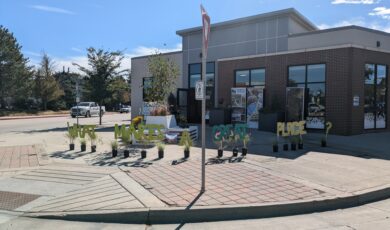
This past summer, our intern Jordan Clugston embraced the challenge of transforming an underutilized streetscape right outside our Fort Collins…
Read More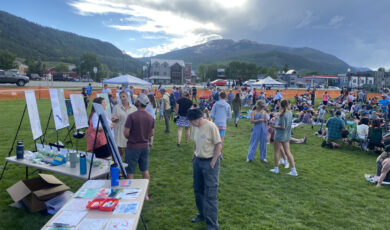
Major themes include rec paths and indoor recreation amenities This article originally appeared in The Crested Butte News. …
Read More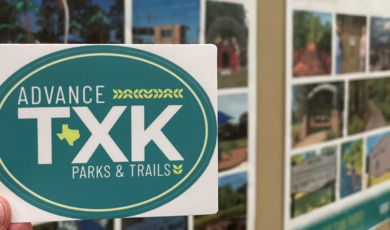
This article originally appeared in The Texarkana Gazette. TEXARKANA, Texas — Residents interested in the future of city parks…
Read More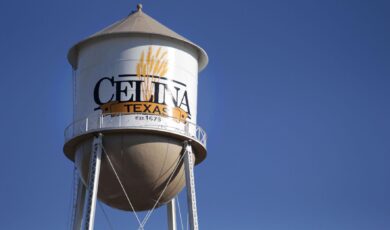
This article and associated image originally appeared in the Celina Record. Celina has been awarded grant funding from the…
Read More